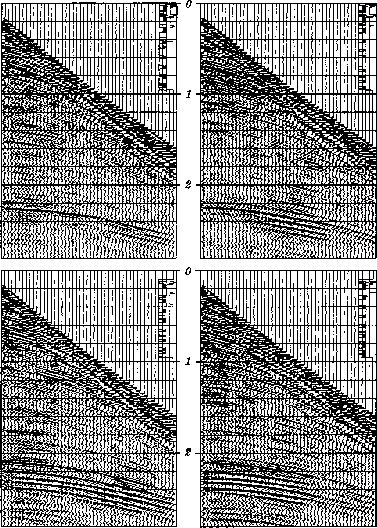|
|
|
|
Imaging in shot-geophone space |
The dataset Kjartansson studied was a seismic line across the Grand Isle gas field, off the shore of Louisiana. The data contain several classic ``bright spots'' (strong reflections) on some rather flat undisturbed bedding. Of interest are the lateral variations in amplitude on reflections at a time depth of about 2.3 seconds on Figure 9.3. It is widely believed that such bright spots arise from gas-bearing sands.
Theory predicts that reflection coefficient should be a function of angle. For an anomalous physical situation like gas-saturated sands, the function should be distinctive. Evidence should be found on common-midpoint gathers like those shown in Figure 9.1.

|
|---|
|
kjcmg
Figure 1. Top left is shot point 210; top right is shot point 220. No processing has been applied to the data except for a display gain proportional to time. Bottom shows shot points 305 and 315. (Kjartansson) |
|
|
|
|
|
|
Imaging in shot-geophone space |